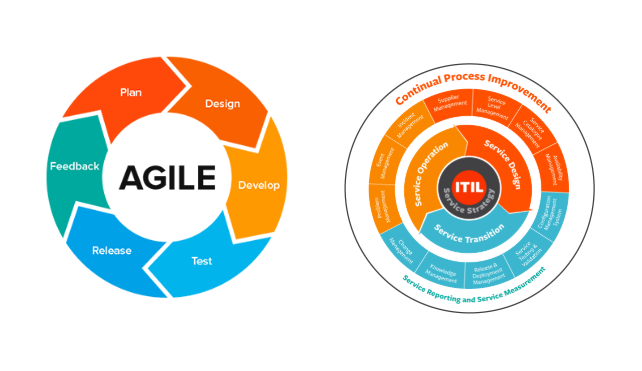In the early years of IT, familiarity with ITIL was essential for structuring IT organizations and implementing processes effectively. However, with the emergence of Agile methodologies over the past decade, there has been a shift in perception, with Agile often heralded as the superior approach while ITIL is viewed as outdated and rigid. But is it a matter of “either-or”? Did Agile truly sound the death knell for ITIL?
ITIL, born out of the need to streamline IT operations and support the British government’s IT infrastructure, has evolved significantly over time. Initially focusing on a handful of processes, it has expanded to encompass over 20 or 30 processes, becoming increasingly complex and cumbersome to navigate. Yet, at its core, ITIL remains dedicated to optimizing IT service delivery, minimizing business impact, and fostering efficient operations.
The challenge arises when organizations delve too deeply into ITIL’s intricacies, resulting in overly complex and rigid structures that hinder agility and innovation. Herein lies the appeal of Agile methodologies, which prioritize flexibility, collaboration, and responsiveness over rigid processes and documentation.
Agile empowers product teams to take ownership of their projects, fostering a culture of innovation and adaptability. It emphasizes iterative development, rapid prototyping, and close collaboration with stakeholders to deliver value incrementally and respond swiftly to changing requirements.
In addition to flexibility and collaboration, Agile methodologies offer other benefits, such as enhanced customer satisfaction through early and continuous delivery of valuable software, improved team morale and motivation through autonomy and self-organization, and greater adaptability to market changes and customer feedback.
Indeed, the coexistence of Agile and ITIL represents a harmonious blend of agility and structure, innovation and stability, responsiveness, and governance. This integration can take various forms and I don’t want to provide solutions but one easy way is to – establish clear collaboration mechanisms between product teams and ITIL process owners by appointing product team representatives liaising with ITIL process owners to ensure awareness and strong alignment. Ultimately, the key lies in striking a balance between agility and stability, innovation, and governance. By integrating Agile principles into ITIL frameworks and vice versa, organizations can deliver value consistently while remaining responsive to evolving business needs and market dynamics.
In conclusion, Agile and ITIL are not mutually exclusive; rather, they complement each other, each serving a distinct yet interconnected purpose within the broader landscape of IT service management and product development. By embracing the synergies between Agile and ITIL, organizations can achieve greater efficiency, resilience, and competitiveness in today’s fast-paced digital environment.
Chris Franskin





